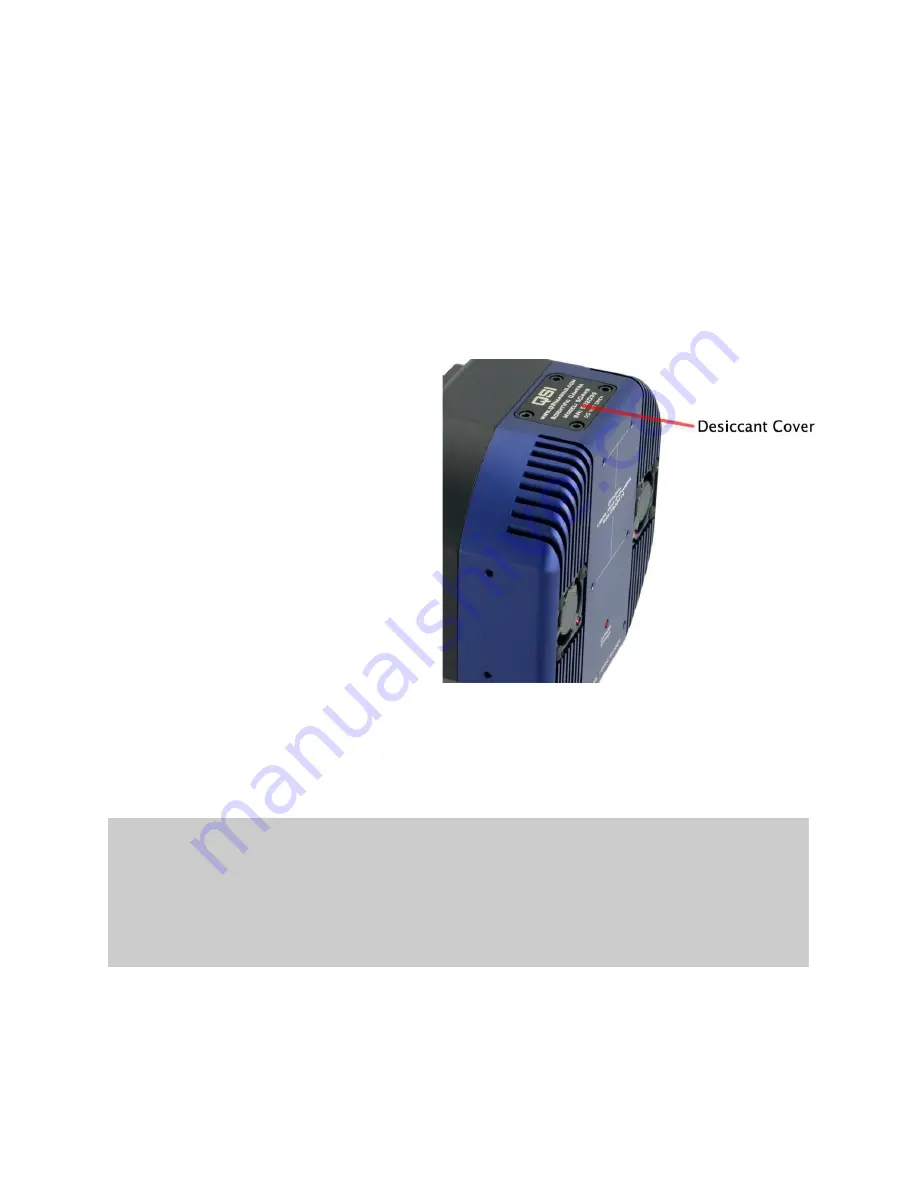
46
You can restore many of the benefits of the original UHP argon by recharging the microsieve
desiccant in the desiccant chamber. The desiccant removes the moisture present in the
environmental chamber and stores it behind a submicron gas permeable membrane. Over time
the desiccant will lose its ability to remove additional moisture and you may begin to see frost or
dew forming on the CCD cover glass when operating the CCD at low temperatures or in high
humidity environments.
To recharge the desiccant, unplug the camera and allow sufficient time for the CCD to reach
room temperature. Place the camera, with the desiccant chamber cover upright, on a stable
surface. Loosen the four screws holding the desiccant cover and lift it from the camera.
Lift the brass desiccant canister from the
camera. Preheat an oven to 500 degrees
Fahrenheit. Place the desiccant canister in
the 500°F oven for 4 to 5 hours. This will
drive out the accumulated water molecules,
recharging the desiccant.
Remove the desiccant canister from the
oven and let it cool. As soon as the canister
leaves the oven it will begin absorbing
moisture.
To minimize the impact on the effectiveness
of the desiccant, the canister should be
returned to the camera as soon as it has
cooled to nearly room temperature. Place it
back in the desiccant chamber with the fine
grid face down toward the inside of the
camera. Screw the nameplate back down
to the camera making sure that the O-ring
surrounding the nameplate is carefully seated
against inside of the environmental chamber.
Note:
Your camera can also be returned to QSI to have the environmental chamber purged
and refilled with argon gas and the desiccant recharged. Argon has better thermal insulating
properties than air and provides the best results but the camera will work extremely well in
most conditions with just air in the chamber and an active desiccant plug. For the QSI-6162
camera please contact QSI support for the environmental chamber maintenance instructions
Please contact QSI support for further details.















































